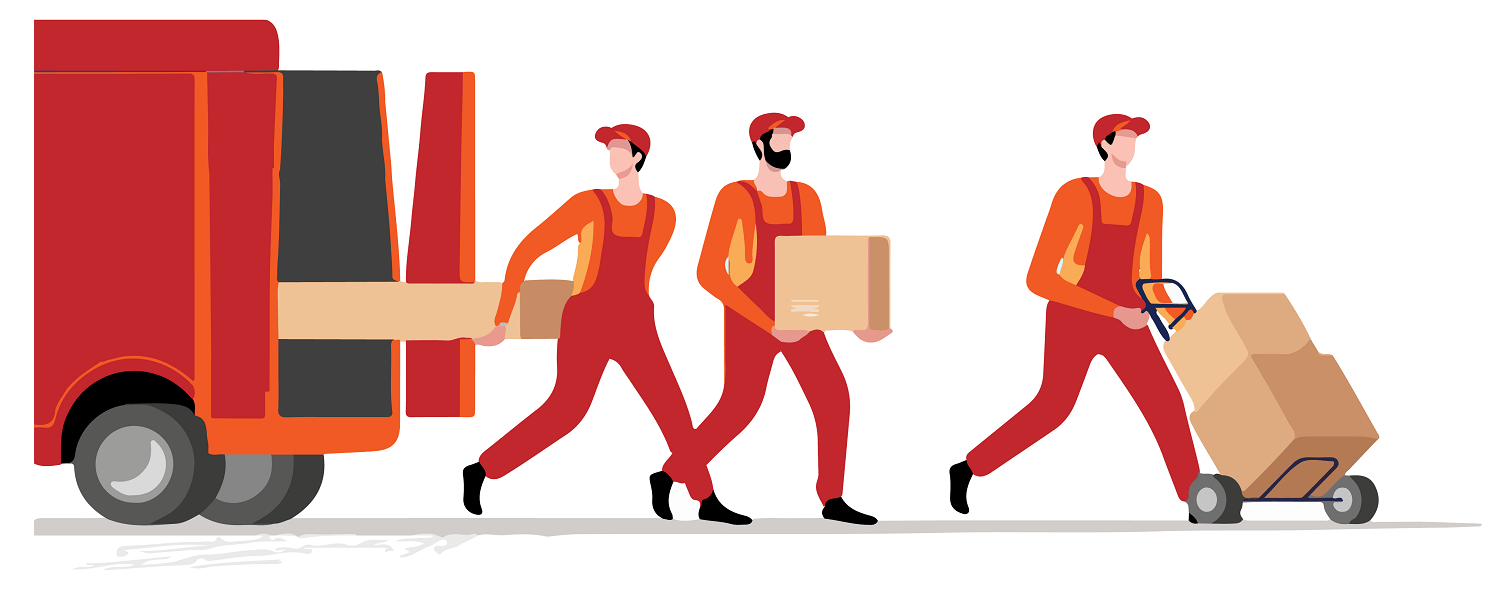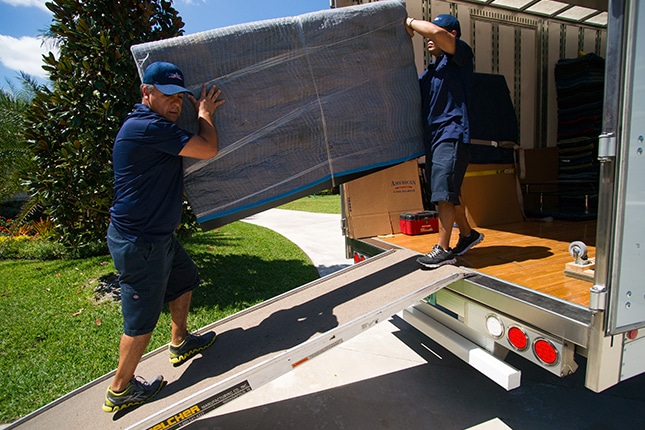Best Movers Near Me: Typical Moving Errors and Ways Moving Companies Can Help
Long Term Storage Movers: Expert Relocation Specialists Can Help Make Your Shift Smooth And Hassle-free
History and Development of Moving Services
The Dawn of Moving: From Muscle to Devices
Picture this: a handful of strong guys transporting heavy trunks on wood carts, browsing cobblestone streets with sweat and determination. Before the contemporary moving market took shape, moving was a ruthless, labor-intensive task. In ancient times, relocation frequently suggested relying on sheer physical strength and simple tools. The absence of specialized services implied families and merchants had to collaborate every information themselves, often risking damage or loss.
Isn't it fascinating how necessity fuels innovation? As cities broadened and commerce flourished, the need for efficient, reputable moving options ended up being glaringly apparent. Get in the era of horse-drawn wagons and later on, motorized lorries, which revolutionized how belongings traveled from one location to another.
Industrial Revolution: The Catalyst for Modification
The 19th century's commercial boom reshaped lots of facets of life, consisting of how people moved. All of a sudden, city migration surged, and with it, the demand for professional movers escalated. No longer was moving an easy task; it progressed into a specialized service offering:
- Packing competence to safeguard fragile products
- Organized loading methods optimizing space
- Transport options tailored to different distances
This period marked the birth of companies dedicated entirely to moving, laying the groundwork for today's complex logistics and customer-centric methods.
Technological Advancements and Their Impact
Can you envision moving without contemporary equipment? The introduction of hydraulic lifts, forklifts, and pallet jacks transformed the industry overnight. All of a sudden, movers might deal with large furnishings and heavy appliances with ease, decreasing injuries and enhancing performance.
Furthermore, the integration of digital innovation triggered a new wave of development. GPS tracking, online booking platforms, and real-time stock management have actually ended up being staples in the moving services landscape. These tools not just improve openness but also empower customers to stay linked and notified throughout their moving journey.
Secret Milestones in Moving Services Evolution
| Period | Advancement | Significance |
|---|---|---|
| Ancient Times | Manual work and standard carts | Foundation of moving as a necessity |
| 19th Century | Horse-drawn wagons and packaging services | Birth of professional moving companies |
| 20th Century | Motorized trucks and mechanized equipment | Increased performance and scale |
| 21st Century | Digital integration and GPS innovation | Improved customer experience and logistics |
Reflections on the Journey
Reviewing the advancement of movers, one might wonder: how did a simple act of transferring valuables end up being a sophisticated industry? It's a tale of durability, adaptation, and constant improvement. From the sweat-soaked streets of old to the precision-driven operations of today, the history of moving services is as dynamic as the individuals who count on them.
Next time you load a box or work with a mover, think about the layers of history embedded in every action. The journey of movers encapsulates human ingenuity, transforming what was as soon as a complicated job into a seamless experience.
Exploring the Spectrum of Moving Services
When the time concerns move your life from one address to another, the variety of moving services offered can seem like navigating a maze. Do you need a basic loading and unloading crew, or does your relocation demand the finesse of complete packing and unpacking? Comprehending the subtleties can save hours of aggravation and unexpected costs.
Common Types of Moving Services
- Local Relocations: Created for relocations within a city or city, these services generally operate on a per hour basis, best for short distances.
- Long-Distance Moves: Covering moves beyond 100 miles, these need more coordination, from logistical preparation to protect transportation, often priced by weight and range.
- Full-Service Moves: Movers deal with everything-- packaging, filling, transferring, dumping, and often even unloading. Perfect for those pushed for time or energy.
- Self-Service Relocations: You load and fill your belongings, while the company deals with transportation and dumping. A happy medium offering cost savings and some convenience.
- Specialized Relocations: For delicate, large, or important products like pianos, antiques, or art work, requiring specific equipment and expertise.
Specialist Tips to Navigate Your Moving Service Choices
- Prioritize Versatility: Select a service that adjusts to unanticipated delays or last-minute modifications-- stiff schedules can turn a smooth move into a logistical headache.
- Check Insurance Options: Not all moving business offer the same level of defense. Understanding your coverage can prevent heartache if something goes awry.
- Demand In-depth Stocks: A precise item list prevents disputes and guarantees responsibility, specifically when handling long-distance or specialty relocations.
- Think About Season: Seasonal need can impact availability and prices. Early reserving throughout off-peak seasons might approve better service and flexibility.
- Inquire About Packing Materials: High-quality boxes, bubble wrap, and cushioning can be the difference in between a scratched treasure and a pristine arrival.
Table: Service Features Compared
| Service Type | Who Loads? | Transport Mode | Normal Rates Design | Perfect For |
|---|---|---|---|---|
| Local Move | Consumer or Movers | Truck | Hourly | Brief ranges, small loads |
| Long-Distance Move | Movers | Truck or Container | Weight & & Range | Cross-state or regional relocation |
| Full-Service Move | Movers | Truck | Flat or Weight-Based | Time-sensitive, high-stress relocations |
| Self-Service Move | Client | Truck or Container | Flat or Per hour | Cost-conscious, hands-on movers |
| Specialized Move | Movers with knowledge | Specialized Equipment | Customized Quote | Delicate or important items |
The Unseen Intricacy Behind Each Choice
Have you ever wondered why moving appears uncomplicated on television but turns into a cascade of last-minute choices in genuine life? The truth lies in the intricacies of each service type. For example, full-service relocations may appear like a luxury, however the knowledge associated with packing delicate heirlooms or disassembling bulky furniture is a craft refined over years. Opting for a self-service relocation might save cash, but it demands a keen understanding of how to load effectively-- did you know that stacking strangely shaped boxes incorrectly can trigger internal shifting during transit, damaging fragile contents?
Selecting the ideal type of moving service is not simply about convenience-- it's about securing your memories and investments. What's your relocation's story going to be?

Packing and Moving Strategies
Ever attempted to fit a suitcase that just won't close? That's the sort of puzzle expert movers solve daily-- but on a much larger scale. The secret lies not in strength but in strategic placement and intelligent use of area. Packaging isn't merely about packing items into boxes; it's an art form where every inch counts.
Layering for Success
Think of a painter layering colors to produce depth. Likewise, when packing, start with much heavier items at the bottom, then cushion with softer products like bubble wrap or towels. This prevents damage and maximizes box stability. Oddly shaped items can slip into gaps, minimizing lost area.
- Wrap delicate items individually with tissue or foam to prevent scratches.
- Use clothing as padding-- it's both effective and environment-friendly.
- Fill empty spaces with packaging peanuts or crumpled paper to lessen movement.
Identifying: The Unsung Hero

What good is best packing if you invest hours rummaging through boxes? Comprehensive labeling is a game-changer. Instead of unclear tags like "Cooking area," try this method:
| Label | Description | Priority |
|---|---|---|
| Vulnerable - Glassware | Manage with care, consists of fragile products | High |
| Essentials - Opening Night | Items required immediately after moving | Immediate |
| Books - Research Study Space | Stacked, heavy books | Medium |
Strategic Packing Tips
- Disassemble large furniture and keep screws in identified bags taped to the pieces.
- Use uniform box sizes when possible-- stacking becomes simpler and safer.
- Don't overpack boxes; weight limits exist for a factor. Goal for 40-50 pounds max.
- Wrap furnishings edges with moving blankets to prevent scratches throughout transit.
- Seal boxes with premium packaging tape-- double layers on the bottom are vital.
Why do some movers swear by a color-coded system? Since it gets rid of guesswork on moving day. Appoint each room a color and mark boxes accordingly. This little action can save hours when discharging and unloading.
Packing and moving need precision-- like a chess game where every move counts. Have you ever discovered how some movers manage large products effortlessly? They take advantage of angles and pivot points to navigate tight corners without damage. It's not muscle; it's strategy.
Unseen Battles Behind the Moving Van Doors
Ever enjoyed a group of professional movers carry a grand piano through a narrow doorway and questioned how they pull it off without a scratch? The art of moving isn't simply muscle and trucks; it's a delicate dance with unpredictability. Weather can flip from a sunlit true blessing to a torrential hazard in minutes, turning a simple drive into a logistical labyrinth.
One infamous difficulty is the labyrinthine design of some homes or apartment or condos. Staircases too tight for dollies, entrances narrower than basic boxes, or elevators that more info barely fit a couch-- these physical quirks demand innovative options on the area. Movers often resort to unconventional tactics like disassembling furnishings or utilizing customized cushioning to secure both the product and the home.
Accuracy Packaging: More Than Simply Wrapping
It's tempting to believe packaging is simply stuffing boxes, however the reality is a complex puzzle of weight circulation and fragility. Movers need to anticipate how products will move during transit-- a miscalculation can imply shattered treasures or dinged up appliances. The trump card? Strategic layering and utilizing materials with particular shock-absorbing qualities.
- Bubble wrap is standard, but rotating it with foam sheets can considerably decrease impact damage.
- Heavy products go at the bottom; delicate ones nestle on top, cushioned by soft fabrics.
- Labeling boxes not just by contents however by managing directions ensures quicker, safer discharging.
Another less spoke about stress is the psychological toll. The clock ticks relentlessly, and every hold-up ripples through tight schedules. Remaining calm amid chaotic last-minute changes requires psychological dexterity and team synergy.
Traffic Jams and Timing: The Unnoticeable Challengers
| Obstacle | Professional Method | Effect |
|---|---|---|
| Urban congestion | Path optimization apps and flexible scheduling | Lessens hold-ups and fuel usage |
| Parking restrictions | Pre-arranged licenses or strategic parking close by | Avoids fines and time loss |
| Unforeseeable weather | Water resistant coverings and contingency strategies | Preserves the condition of goods and devices |
Do you actually know what it takes to keep a moving day on track? It's not practically strength or endurance; it has to do with insight, adaptability, and a deep understanding of every piece of the puzzle. The next time you see movers at work, keep in mind: behind that smooth operation lies a series of calculated maneuvers and quick thinking that couple of ever notification.